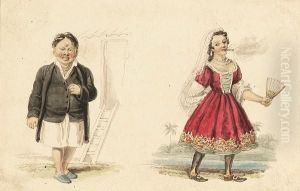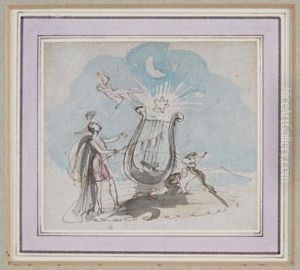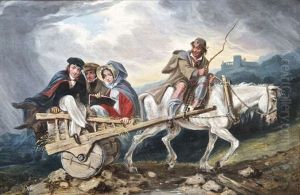William Henry Brooke Paintings
William Henry Brooke was an English artist, illustrator, and engraver known for his contributions to various important publications during his time. Born in 1772, Brooke's artistic career spanned a period of significant change in the English art world, particularly with the advent of new printing technologies and the rise of the illustrated book.
Brooke's work was characterized by his detailed line engravings and illustrations. He was particularly adept at capturing the essence of a story through his imagery, which made him a sought-after illustrator for books and periodicals. Throughout his career, he contributed to the visual culture of the era by providing images that complemented and enhanced the written word.
One of Brooke's most notable contributions was to Thomas Frognall Dibdin's 'Bibliographical Decameron' (1817), a work that celebrated the history of books and printing. Brooke's illustrations for this publication are considered some of his finest, showcasing his skill in rendering intricate details and his understanding of bookish iconography.
Despite his prolific career as an illustrator, Brooke did not achieve the same level of fame as some of his contemporaries. Nevertheless, his work remains a valuable part of the history of English book illustration. Brooke continued to work well into his later years, contributing to the visual language of the 19th century. He passed away in 1860, leaving behind a body of work that reflects the interests and aesthetics of his time.



